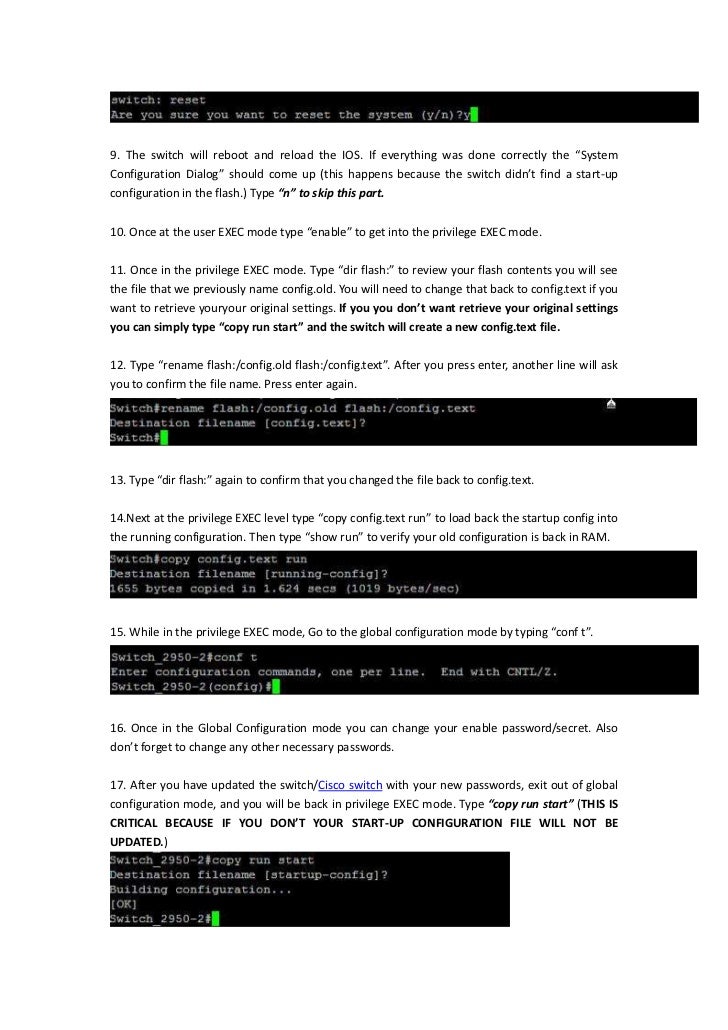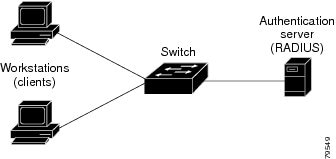

- #How to configure exec banner on cisco 2950 switch how to#
- #How to configure exec banner on cisco 2950 switch update#
- #How to configure exec banner on cisco 2950 switch manual#
- #How to configure exec banner on cisco 2950 switch upgrade#
- #How to configure exec banner on cisco 2950 switch software#
Use the switch setup program if you want to be prompted for specific IP information. You can assign IP information through the switch setup program, through a DHCP server, or manually. Note If the data bits option is set to 8, set the parity option to none.


#How to configure exec banner on cisco 2950 switch software#
For more information, see the “Disabling Password Recovery” section.īefore you can assign switch information, make sure you have connected a PC or terminal to the console port, and configured the PC or terminal-emulation software baud rate and character format to match these of the switch console port: For more information, see the “Recovering from a Software Failure” section and the “Recovering from a Lost or Forgotten Password” section. The trap-door mechanism provides enough access to the system so that if it is necessary, you can format the flash file system, reinstall the operating system software image by using the Xmodem Protocol, recover from a lost or forgotten password, and finally restart the operating system. The boot loader also provides trap-door access into the system if the operating system has problems serious enough that it cannot be used. After the boot loader gives the operating system control of the CPU, the boot loader is not active until the next system reset or power-on. Normally, the boot loader is used only to load, uncompress, and launch the operating system. The boot loader provides access to the flash file system before the operating system is loaded. Loads a default operating system software image into memory and boots up the switch.It tests the CPU DRAM and the portion of the flash device that makes up the flash file system. Performs power-on self-test (POST) for the CPU subsystem.It initializes the CPU registers, which control where physical memory is mapped, its quantity, its speed, and so forth. Performs low-level CPU initialization.The normal boot process involves the operation of the boot loader software, which performs these activities: To start your switch, you need to follow the procedures in the Getting Started Guide or the hardware installation guide for installing and powering on the switch and for setting up the initial switch configuration (IP address, subnet mask, default gateway, secret and Telnet passwords, and so forth). For complete syntax and usage information for the commands used in this chapter, see the command reference for this release and the Cisco IOS IP Command Reference, Volume 1 of 3: Addressing and Services from page.
#How to configure exec banner on cisco 2950 switch how to#
It also describes how to modify the switch startup configuration.
#How to configure exec banner on cisco 2950 switch manual#
Note This chapter describes how to create the initial switch configuration (for example, assigning the IP address and default gateway information) for the Catalyst switch by using a variety of automatic and manual methods.
#How to configure exec banner on cisco 2950 switch upgrade#
#How to configure exec banner on cisco 2950 switch update#

Configuring the DHCP Auto Configuration and Image Update Features.Configuring DHCP-Based Autoconfiguration.Understanding DHCP-based Autoconfiguration and Image Update.Understanding DHCP-Based Autoconfiguration.Recommendations for Upgrading a Catalyst 2950 Switch to a Catalyst 2960 Switch.Unsupported Commands in Cisco IOS Release 15.0(2)SE.Working with the Cisco IOS File System, Configuration Files, and Software Images.Configuring EtherChannels and Link-State Tracking.Configuring Cisco IOS IP SLAs Operations.Configuring System Message Logging and Smart Logging.Configuring LLDP, LLDP-MED, and Wired Location Service.Configuring DHCP Features and IP Source Guard.Configuring Flex Links and the MAC Address-Table Move Update Feature.Configuring Optional Spanning-Tree Features.Configuring IEEE 802.1x Port-Based Authentication.Configuring Switch-Based Authentication.Configuring Cisco IOS Configuration Engine.Assigning the Switch IP Address and Default Gateway.


 0 kommentar(er)
0 kommentar(er)
